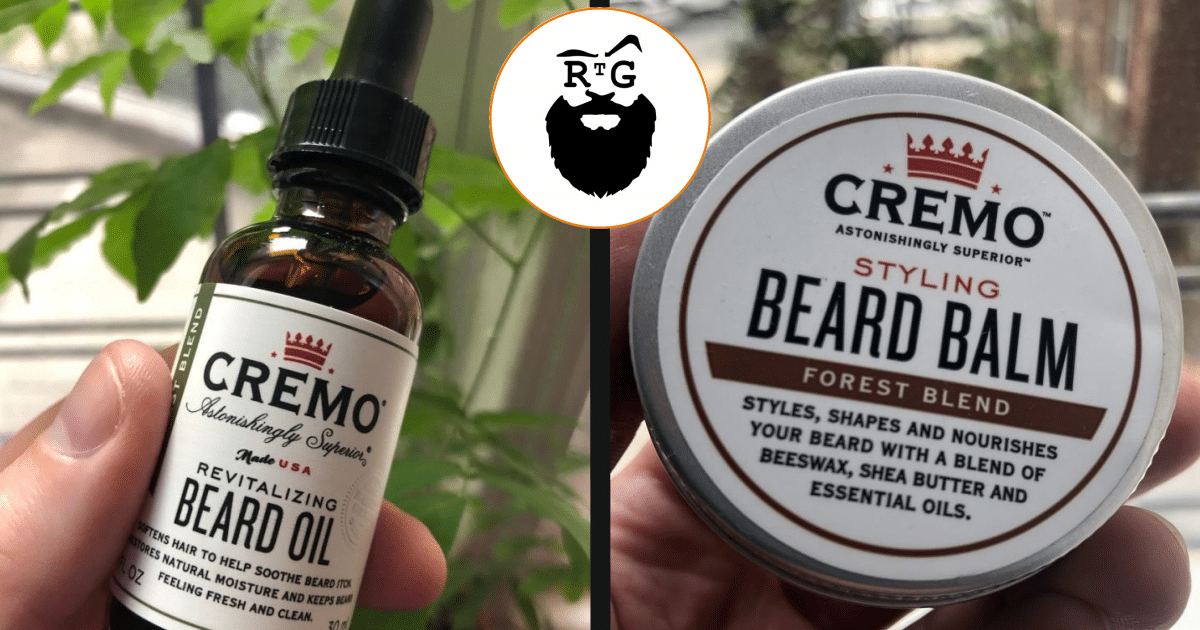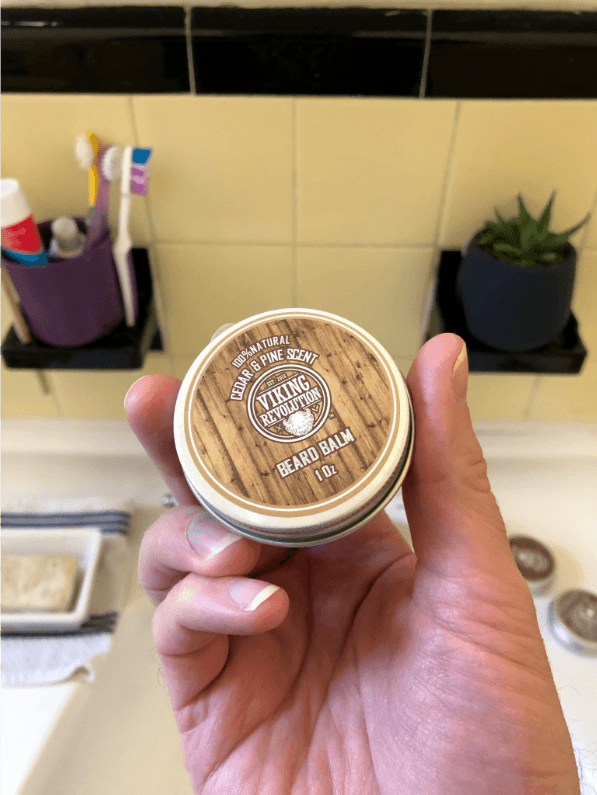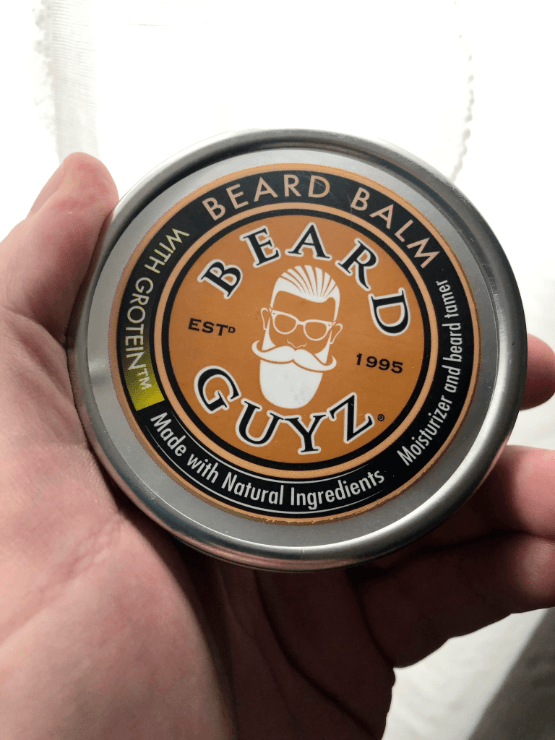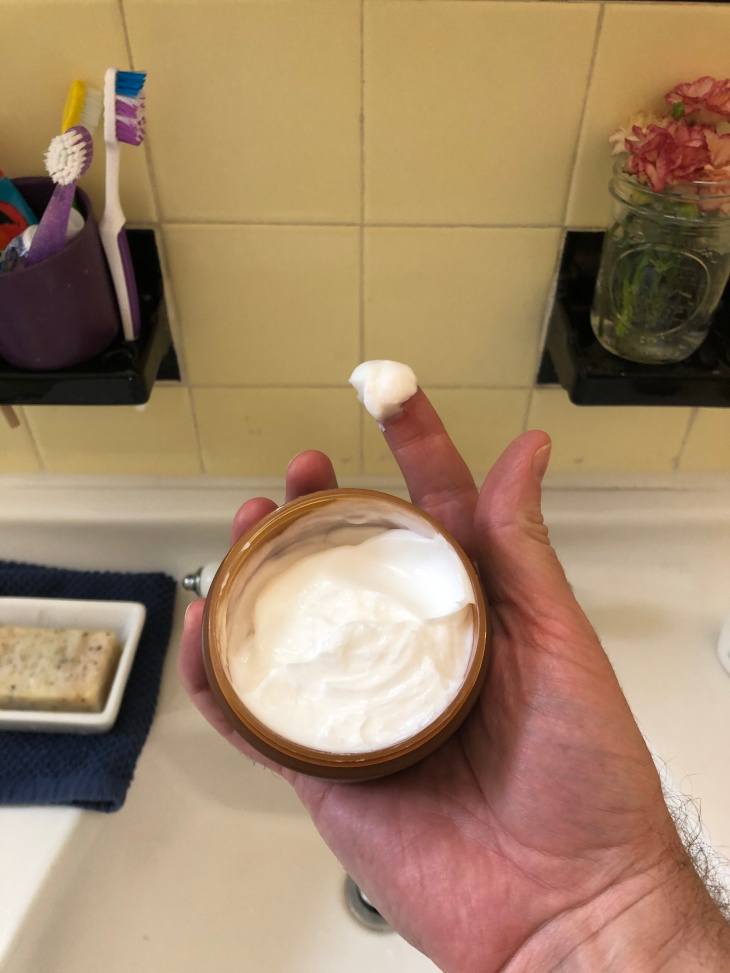If you’re new to having a beard and trying to maintain it, you’re probably realizing that there are a crazy number of beard products out there, and it’s not really clear what each one does. You’d imagine they’d be easy to figure out, but it’s actually a little complicated, and it takes a little research to piece everything together. To help, today we’re going to compare beard oil vs balm and tell you everything you know about how (and when) to use each product, and explain exactly how they differ.
These are probably the most popular beard products you’ll come across, and they’re really all you need to maintain a healthy, well-moisturized beard.
As we compare beard balm vs
Key Differences Between Beard Oil and Beard Balm
- Beard oil has a slick, watery texture, and is used to moisturize your beard and hydrate your skin.
- Beard balm has a waxy, semi-solid consistency, and is used to moisturize your beard and hydrate your skin *and* provide your beard with some hold.
- If you want to moisturize your beard, both will do the trick, but if you want some hold / want to style your beard, beard balm is the better option.
If you want recommendations on which oils and balms we think work best, skip to the “Recommendations” section, and we’ll share our favorites.

Alright! Let’s dig a little deeper.
What They Are and What They’re Supposed to Do
Here’s a very quick description that encapsulates pretty much everything you need to know:
Here are the basics of beard oil
>
>
>
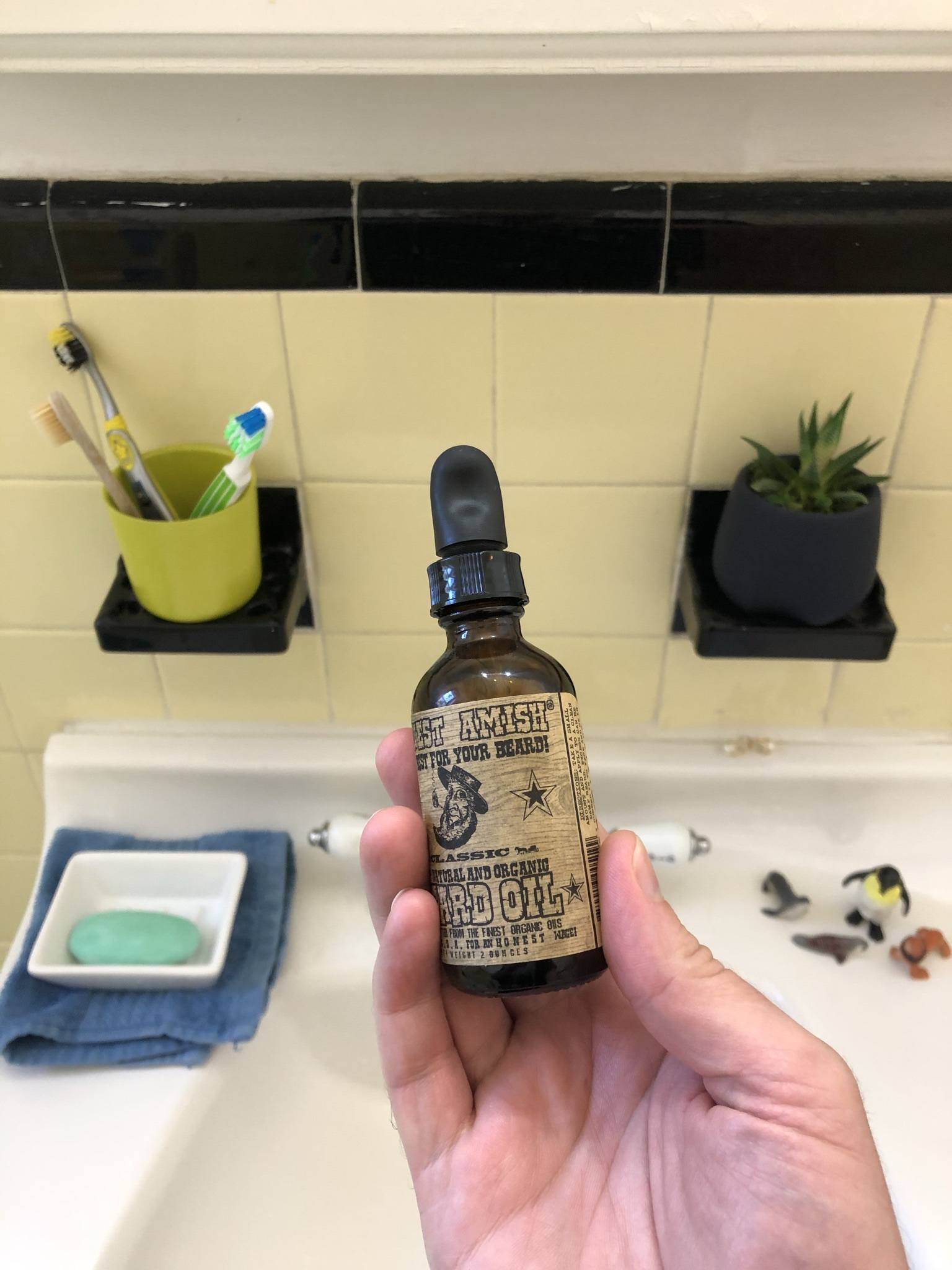
…and it looks like this:
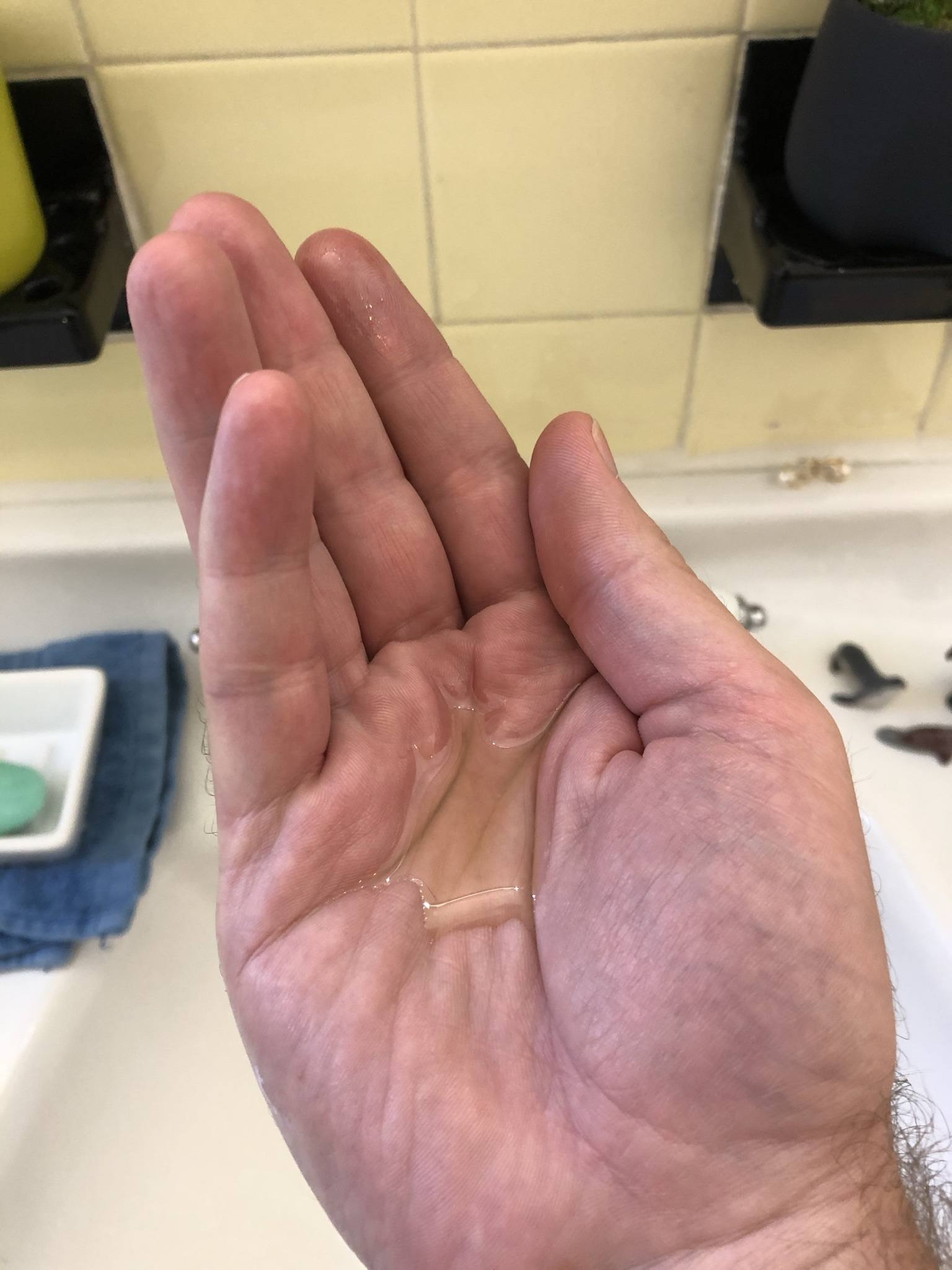
Here are the basics of beard balm:
> Beard balm has all the ingredients of a
> Beard balm is designed to moisturize your beard and the skin beneath your beard—just like
> Beard balm is a spreadable semi-solid, and it usually comes in tins that look like this:
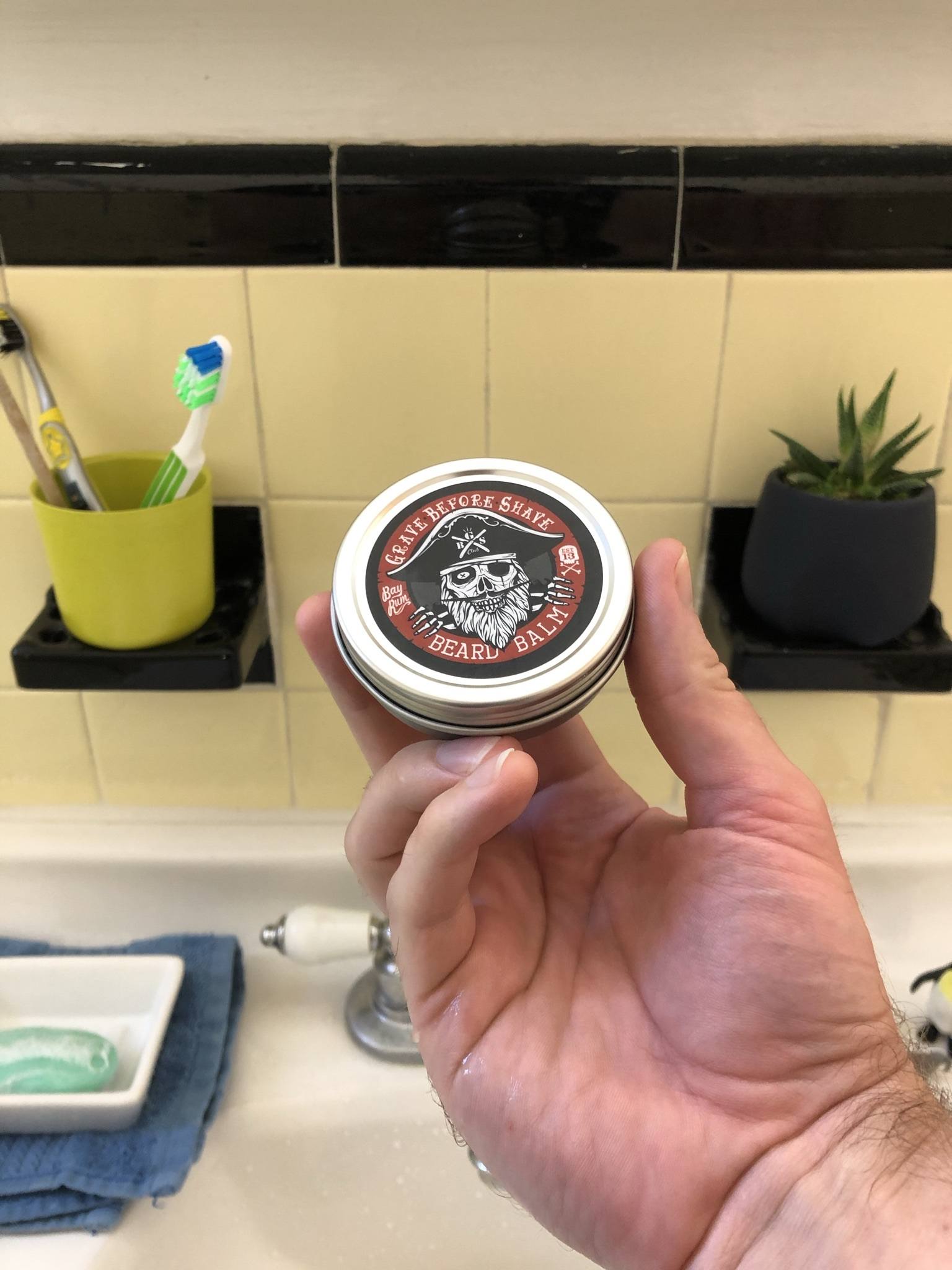
…and it looks like this:
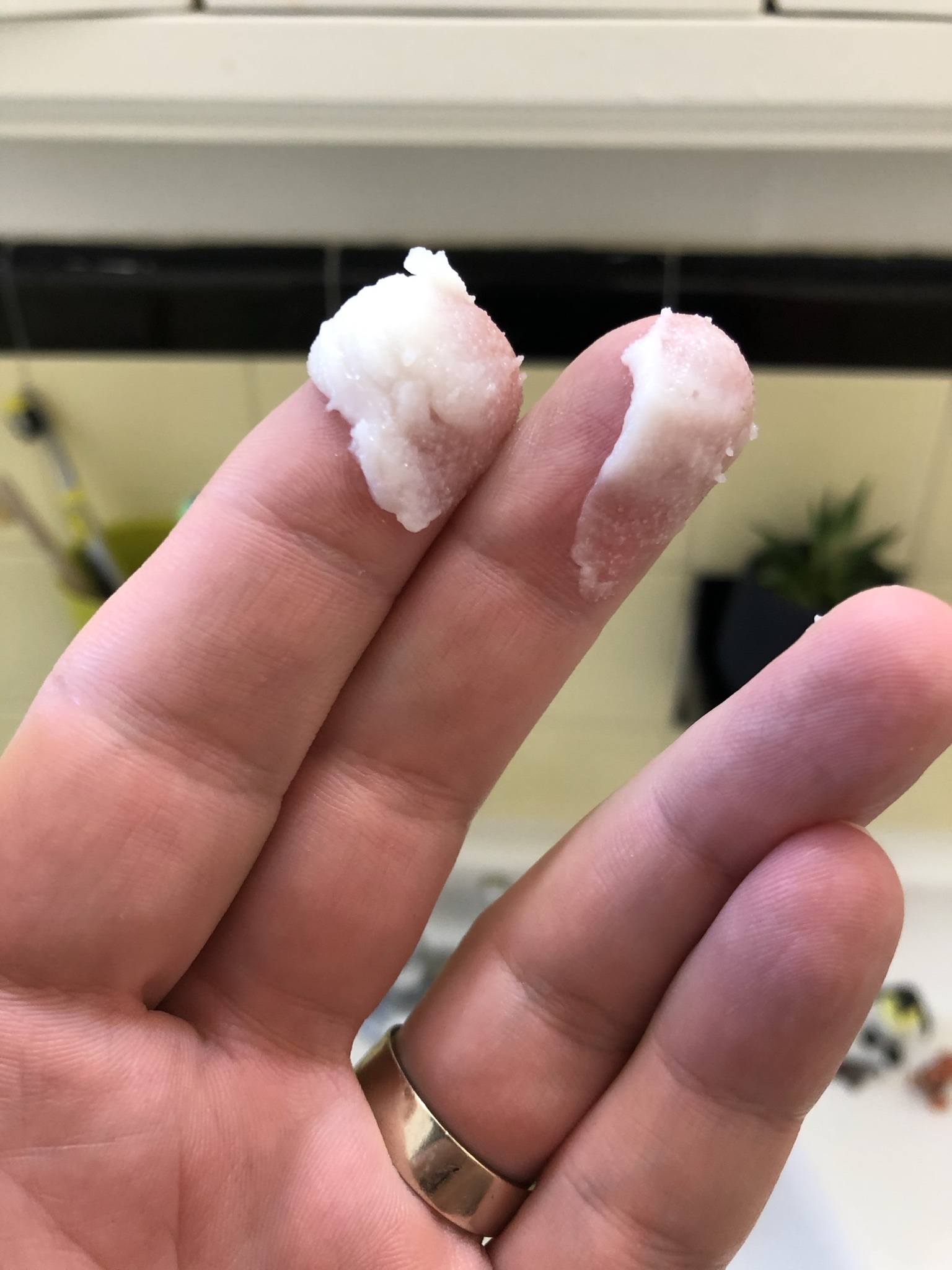
There you have it! That’s basically it—the entire difference between
Now you know! For those of you who really want to get into the nitty-gritty of the

Pros and Cons of Beard Oil
This one is a little simpler, so we’ll start here:
Reasons Beard Oil is Fantastic
It’s one of the best ways to hydrate your skin. Oil is, in itself, a moisturizer, and it’s been used by people in every culture throughout every time period in history to hydrate skin. For beards, it’s fantastic—it’s really easy to work into a beard, and it doesn’t take long for your entire beard to get coated and get a nice shine on it.
But
There are some really incredible scent profiles you can buy. Perhaps more than any other beard product, beard oils are made in some very creative scents. There are the basic, “single-note” scents like vanilla, lime, tea tree, patchouli, and so on, but there are some *really* creative concoctions sold, like vanilla and tobacco, tequila and lemon, eucalyptus and lime, and many, many more. One of our favorite makers of
Reasons Beard Oil Isn’t Perfect
Alas, even though we just talked it up,
It can evaporate pretty quickly. This is, perhaps, the biggest complaint about beard oils: you put it into your beard, it smells great, you go about your day, and it feels great, and then… poof, gone. That’s just how it is, and a loooot of beard oils are like that (and that’s why a lot of guys who use beard oils reapply them during the day). Keep in mind, that doesn’t mean they’re not working—they hydrate just fine—they just seem to “expire” after a while. And that’s another weakness:
The ingredients can go bad. It doesn’t happen often, but beard oils can go bad—particularly if they include grapeseed oil, which tends to go south after about six months. Another issue that a lot of beard oils have is that they don’t have an expiration date on the bottle, so you have to keep a mental note of when you got them, and if you need to toss them.
Pros and Cons of Beard Balm
So how does beard balm measure up? Just like everything else in life, it has some good and some bad:
Reasons Beard Balm is Fantastic
The unique benefit of beard balm is that it can provide you with some hold. In addition to that, beard balm can be great because…
Butters are *fantastic* for beard hair. Oils are great, but shea butter has a ton of nutrients like Vitamins A and E, and butters have a tactile quality that makes them adhere to the strands of your beard. If you rub it in properly, it’s not sticky or goopy, so it’s not irritating, but it stays on the beard hair (and the skin, if you can work the balm in far enough), and really hydrates it. That’s fantastic, because you can get that moisturization as long as it’s in your beard.
It’s got a nice, warm feeling upon application. Beard oil can sometimes feel a little greasy—at least that’s true for ones that aren’t well-made—but beard balm has a very nice feel when you apply it. Because it’s got some substantive elements—the butters and the waxes give it a little heft and weight—it can give you a nice, warm, insulated feeling when you’re wearing it. That’s a big plus—we tend to think a lot about moisturization and scent, but the *feel* of a product is important, too.
Reasons Beard Balm Isn’t Perfect
Alas, even beard balm, with its nutrients and hold and fantastic scents, can disappoint. Here’s how:
It doesn’t do as good as job hydrating your skin as
It does a good job styling / providing hold, but it doesn’t do an INCREDIBLE job. You’d think with all that wax in there, you’d be able to achieve any beard look you want. Not the case! Unfortunately, beard balms do a *good* job of providing hold—probably good enough for the vast majority of beard-wearers out there—but not a *WOW* job. After all, a balm’s first and main job is hydration, and all those oils and butters limit what the wax can do. If you want real hold—the kind anti-gravitational, literally freeze-your-beard-in-place hold—you’ll probably need a beard wax, which is mostly wax and little of anything else. Honest Amish Beard Wax (affiliate link) is probably the best known (and in our opinion, best-performing) beard wax out there right now.
So, again, which one is right for you? As we mentioned—if you want hold, beard balm is the better choice, and if you want to alleviate beard itch / beardruff,

Application Tips for Both Balms and Oils
Using
Here are some tips to get you going, and help you get the most out of whatever product you choose:
Tips for Using Beard Oils
> Don’t overdo it. This is a “little dab’ll do you” situation, and a little goes a long way. It’s almost better for your beard to be under-oiled, than over-oiled;
> Once you’ve got a little bit of the oil in your hands, rub them together a few times to warm it up—it’ll allow the oil to spread a little easier, and it’ll permeate through your skin more effectively;
> Reapply if you need to—but don’t feel you need to.
> Most beard oils come with a dropper, and those droppers are *not* air-tight. Keep them dropper-side-up before tilting them to release the fluid—and be careful when travelling with them: because they’re not air-tight, they can leak in transit and ruin all your clothes. NO FUN.
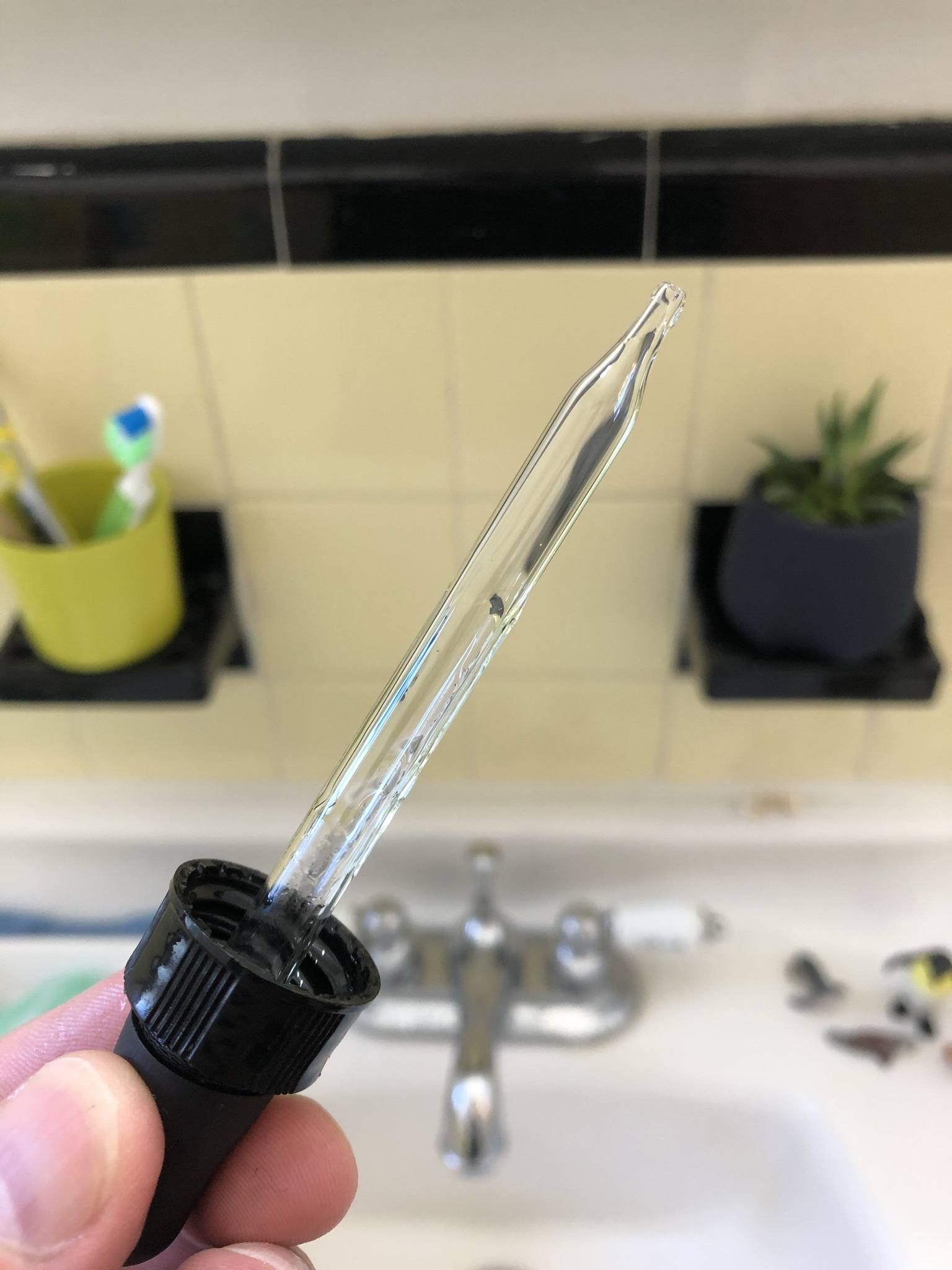
Tips for Using Beard Balms
> You wouldn’t think so, but a little goes a long way with balm, so don’t overdo it at first—you can always add more as you need it;
> Using a beard comb—that is, a wide-tooth wooden comb—to work the balm into your beard can help a lot. For oils, you can get away with just using your hands, but because the balm can clump up sometimes, it’s best to use a comb/brush to really blend it in. We like the Viking Revolution Beard Comb (affiliate link), because it’s a comb and brush in one—it’s got teeth with wider gaps on one side, and teeth with narrower gaps on the other, so you start with the wide side and then move to the narrow side; and
> Be sure to use a beard shampoo to get it out and the end of the day. Oils seem to come out pretty easily, but it can take a little effort to get all that butter and wax out of your beard hair—especially if you like to use a lot of it.
For both beard balms and beard oils, remember that:
> You’ll probably need to wash your hands after using them—both are sticky, and can cling to your skin;
> If you don’t like scented products, there are plenty of unscented options out there, so take a look to find something you like (and we have recommendations below); and
> They both tend to go pretty quickly, especially if you use them every day, so check the bottle or tin every once in a while to make sure you’ve got as much as you need.
Alright! So now you know quite a bit about beard oils vs. beard balms. You’re probably wondering:
Can I / Should I Use Both Beard Balm and Beard Oil ?
You can if you want to! You don’t really need to, and most guys probably don’t, but some people swear it “locks in the oil” and keeps it from evaporating as quickly.
Other guys don’t seem to like it, and think it makes a mess. So… your mileage may vary? Again—whatever works for you.
If you want to give it a go, we’d suggest you start with the
What About Beard Butters and Beard Creams?
Beard butters and beard creams and beard pomades are basically the same thing, but different beard companies call them by different names. The exist somewhere between
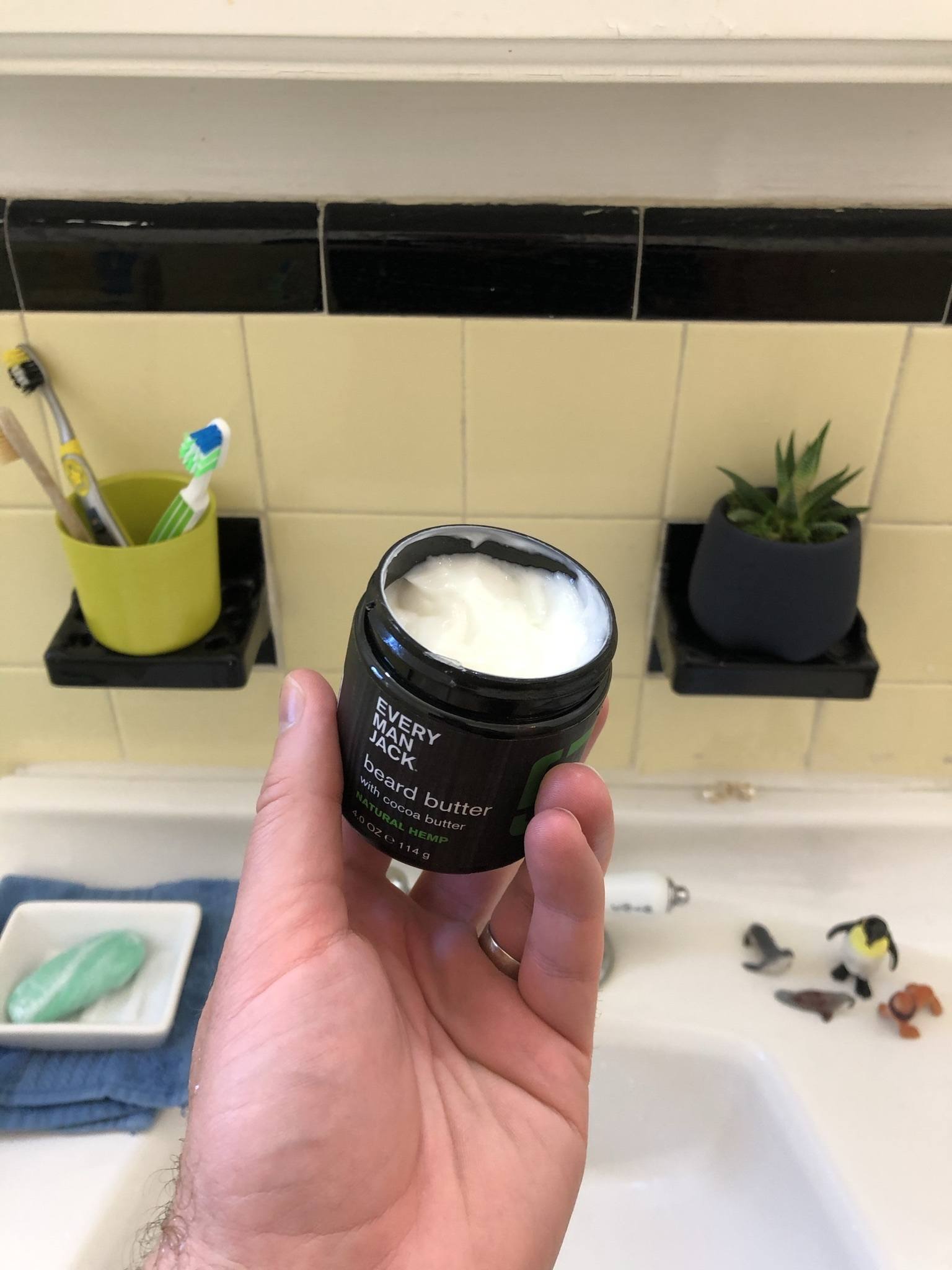
…and they tend to come in tubs or plastic cannisters, as opposed to the bottles beard oils come in and the tins beard balms coming in.
Butters aren’t great for styling or providing you with any hold, but they do a great job of moisturizing both beard hair *and* skin. Because they’re soft—much softer than balm—it’s easier to work them into your beard and onto your skin.
They’re kind of rare, sadly, and there aren’t too many of them on the market, but we like Maestro’s Beard Butter a lot—it has a calm, clean scent and it does a great job moisturizing.
Can you check out our post on beard butter if you’d like to learn more.
Our Oil and Balm Recommendations
There are a lot of great products out there, but here are a few of our favorites:
Our favorite beard oils include:
Grave Before Shave (affiliate link). If you’re looking for scent, this is the “big papa” of the scent game: they’ve got everything from rum + coconut, bourbon + sandalwood, tobacco + vanilla, to citrus, pine, and coffee concoctions.
Zeus Beard Oil (affiliate link). This is probably our favorite “high-end”
Honest Amish Beard Oil (affiliate link). Honest Amish is one of the best-known beard-product companies out there, and the use a “signature scent” that’s a combination of clove, anise, and cedar. You wouldn’t think that smells good, but we (and a lot of people, it seems) absolutely love it. Also has great moisturizing capabilities.
Our favorite beard balms include:
Viking Revolution Beard Balm (affiliate link). This is probably our favorite beard balm overall. It’s easy to use, it feels good, and it’s made in a great Viking Revolution Beard Balm Four-Pack that features four scents: sandalwood (clean), bay rum (sweet), clary sage (earthy), and pine + cedar (woodsy).
Cremo Beard Balm (affiliate link). Cremo has a lot of beard products, but their balm is one of their best—it hydrates well and it goes with all their other beard products. It’s only sold (at present, as far as we know) in Mint Blend and Forest Blend, but we think both are great.
Honest Amish Beard Balm (affiliate link). Honest Amish uses their same scent for their beard balm as they do for their
Our favorite unscented versions include:
Ranger Grooming Company Fragrance-Free Beard Oil (affiliate link). Totally scent-free, 100% organic, and easy to use. Everything we want in a
Striking Viking Unscented Beard Balm (affiliate link). It has a great ingredient list, no scented inclusions, and it contains a reasonable amount of beeswax for some hold. Everything we’d want in a beard balm, without the scent.
Wrapping Up the Beard Oil vs. Balm Debate
That’s about it! Now you know all you’d ever want to know about
Otherwise, hopefully there’s something here that helped you, and hopefully you now have a very clear idea of the
Michael Morris is the head writer here at Rough and Tumble Gentleman. He's got a ducktail beard and loves Brazilian jiu-jitsu. He's married to the woman of his dreams and lives in Brooklyn, NY.

